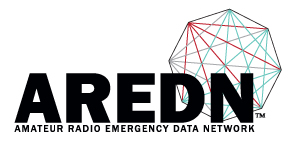There are NO alerts at this time.
Alerts
News
AREDN Group in South Africa Responds to Fire Disaster
A group of amateur radio operators in South Africa known as the the Mossel Bay Mesh Network responded to a call for emergency communications assistance in the recent fire disaster in the Western Cape area.
After the fires began on 7 June, a call went out for amateur radio assistance on 8 June when cell phone, landline and Internet services were lost.Hams responding to the call include: ZS2I, ZS1Q, ZS1ZS, ZS1HB, ZR1AOC and ZS1I. These radio amateurs worked around the clock to assist their local communities. Johan Terblanche, ZS1I, an administrator of the AREDN Mossel Bay Mesh Network reports that disaster communication links remained active until normal telecommunication service was restored on June 11, while the local hams remain on high alert.
It has been reported that the widespread fire caused a number of fatalities, destroyed over 430 structures and displaced thousands of people. The disaster relief efforts are continuing.
The Mossel Bay Mesh Network has posted videos and still photographs of the fire on their web site.
Reported by Southgate Amateur Radio News and the...
QST Magazine Article - AREDN A High-Speed Data Network
Andre Hansen, K6AH wrote an article, published in the June 2017 edition of QST, offering a thorough discussion of a high-speed multimedia network for public service applications..
We present the full article here, which was reprinted with permission from the June 2017 issue of QST, a publication of the ARRL, the national association for Amateur Radio®
Announcing the Availability of Release Candidate #1 of Our Upcoming v3.17.1.0
AREDN encourages users to load (http://www.arednmesh.org/content/software click Release Candidates) and test version 3.17.1.0RC1 and report any issues to the Forum.
Release Notes 3.17.1.RC1
These notes accompany our 3.17.1.0 Release Candidate-1 and describe changes since our last major production release, v3.16.1.0.
New Device Support
Added support for additional Ubiquiti devices which are now flagged as “In testing”:
- AirGrid M5 (XW)
- NanoBeam M5-16 (XW)
- NanoBeam M5-19 (XW)
- NanoStation Loco M5 (XW)
- NanoStation M5 (XW) (in 3.16.1.0)
- Rocket M5 (XW)
- Rocket M5 (with GPS)
- PowerBeam M2-400
- PowerBeam M5-300
- PowerBeam M5-400
-
Added support for newer TP-Link device revisions:
-
CPE210 v1.1
-
Security Fixes
- SCS-2017-001 – High Severity
- A remote Denial of Service flaw impacting ALL RELEASES of the AREDN/BBHN branded firmware since at least version 0.4.3. Immediate upgrade to 3.16.1.1 (or newer) is recommended to ensure stability of the mesh nodes....
CQ Magazine Article - Mesh Networking and AREDN
Don Rotolo, N2IRZ wrote an article, published in the January 2017 edition of CQ Magazine, updating readers on the world of mesh networking.
We present the full article here, which was reprinted with permission from the January 2017 issue of CQ magazine, copyright CQ Communications, Inc.
Pages
Announcements
Installing AREDN on Mikrotik using Windows
The new Mikrotik devices supported by AREDN are great, but the installation procedure for loading AREDN firmware on them using a Linux computer has been intimidating to many in our community.
There is no reason to fear any longer.
Ray KK6RAY (formerly KM6WUH) devised a procedure to install AREDN firmware on Mikrotik using a Windows computer. The widespread familiarity with Windows and fewer steps in Ray's procedure should greatly reduce any anxiety you may have about trying a Mikrotik unit.
Ray produced a 20-minute video to demonstrate the installation procedure. The video is on YouTube here.
In addition to a Windows computer, an AREDN-supported Mikrotik device (see Supported Platform Matrix), and an Ethernet cable, you will need:
- Tiny PXE software running on your Windows computer. Download this software (http://reboot.pro/files/file/303-tiny-pxe-server/) and...
hAP ac lite 5GHz LAN Access Point
Joe AE6XE reports that the Nightly Build available on Nov 28, 2018 will now include capability to use both wireless cards in the hAP ac lite device. The 2GHz is the Mesh RF and now the 5GHz is a standard part 15 Access Point bridged with the LAN network. This means that LAN mesh devices can be both on wifi and physically on the Ethernet port, both allocated the IP addresses assigned for the LAN network.
For now, the 5GHz channels overlapping Doppler Radar are not selectable -- the "DFS" channels. This will be an add on later to integrate in these channels.
The code changes that make this possible, also make the following capability readily doable and are in the pipeline for the nightly build:
1) Activating the Nanostation XM devices' secondary Ethernet port to be standard AREDN functionality (and daisy chain devices with poe passthough).
2) Ability to enable/disable the following for single wireless card devices -- only one active on the wireless at a time or both disabled:
a) mesh RF as we know today
b) LAN Access Point for...
- ‹ previous
- 14 of 35
- next ›
Theme by Danetsoft and Danang Probo Sayekti inspired by Maksimer













